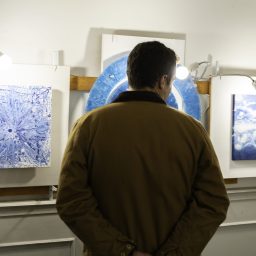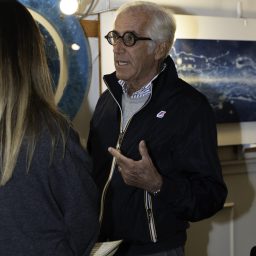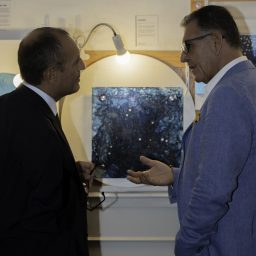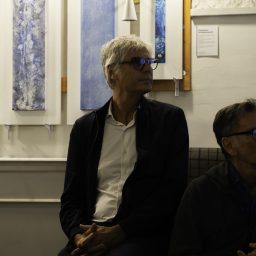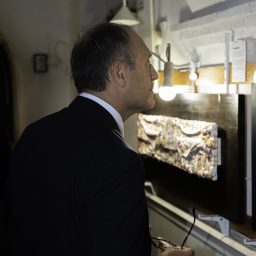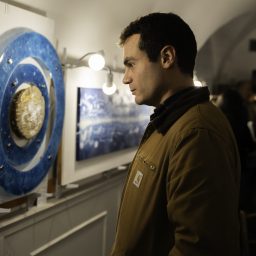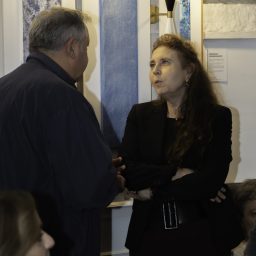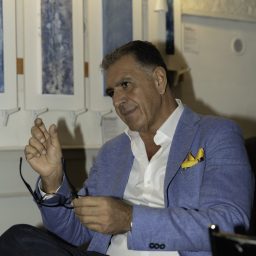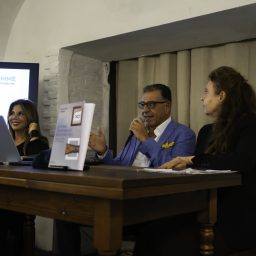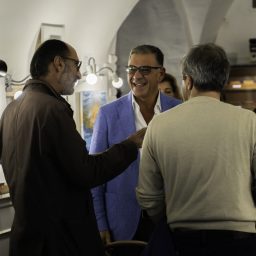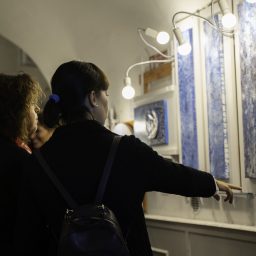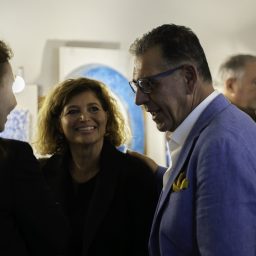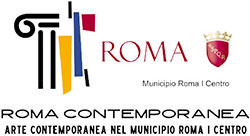Casa Steiner is hosting, for Rome Art Week 2025, a rare retrospective of the Neapolitan artist and designer Nino Salemme. The solid and embracing architecture, the low barrel vaults that seem to hug and protect visitors, and the whiteness of every wall - interpreting in a contemporary key the splendors of a bygone era - are the perfect setting to appreciate the uniqueness of this visual language made of waves, horizons, and distant transparencies.
Nino Salemme, who professionally develops marketing strategies to internationalize SMEs by positioning Made in Italy on a global scale, reveals to us through shapes and colors the deep bond between man and the sea. An ancient connection as old as life itself, dormant in modern urban life but capable of being awakened by satisfying—through symbolic lines and fields—our thirst for freedom and surrender, vastness and silence.
“We have gathered in a single space,” explains Valeria Ruosi, event coordinator, “works by Nino Salemme from private collections that mark the milestones of an inexhaustible desire to tell the story of our wonderful Mediterranean. Nino Salemme’s art goes beyond storytelling; it is the search for the perfect mark. These are incisive conceptual works that remain etched in memory, concentrating universal emotions in which the artist distills and sublimates his own experience—made of continuous travels and a constant return to the timeless purity of his Gulf of Naples, a jewel of the Tyrrhenian Sea and a refuge for his soul.”
Nino Salemme has successfully brought the 20th-century experience of abstraction and informal art back into the strict framework of a language that is at once free and precise. Each work becomes a chapter unto itself, where one can rediscover some of the emotions that accompany anyone who immerses themselves, swims, or otherwise comes into physical contact with the marine universe. The Artist reveals his own secret garden, empathetically and naturally opening up to us the emotions and memories of a collective journey—made by generations of sailors, explorers, and small souls immersed and cradled, fascinated and curious, who watch and touch the giant body of water.
These are the infinite skies, the reflections of the sun on the flat surface on windless days, the lunar and silvery glow, the free darting of fish, the memory of distant land, the crumpled sheets of a bed that welcomed us back, exhausted. Color is not just pigment but soaks into the material; Salemme’s works do not seek the eye’s verisimilitude but emotional resonance. Light crystallizes, leaving physical traces; fluidity and drips generate the sensation of a liquid element, glass condenses and restores the intangible freshness of a cold and sudden splash carried by the wind.
“In the exhibition,” continues Valeria Ruosi, “many of the historically significant works can be admired together, but it is also a great opportunity to be guided through a critical re-reading of the entire pictorial corpus. We will present the book “Azzurre trasparenze Mediterranee, L’arte aniconica di Nino Salemme”, published by Iperuranio editions. A concise text curated by Massimiliano Reggiani that offers a selection of works where the critic’s gaze blends with the artist’s memories, providing a dual-voice reading of this joyful yet sometimes melancholic personal aesthetic.”
Nino Salemme has brought to the Italian art scene an echo of the great continental romanticism, where the reflection between the individual and the infinite—shaped through the brutal beauty of wild nature—reveals the physical and inner fragility of the human being. An art that deliberately distances itself from an anthropocentric reading of the universe, finding its balance in the tension between impulse and geometry, between defined contours and the turmoil of personal experience. Proportion, numerical relationships, and the linearity of overall perception complete Salemme’s art with a nod to classical philosophy and universal harmony—an element the artist, son of the sea and Magna Graecia, could evidently not overlook.

